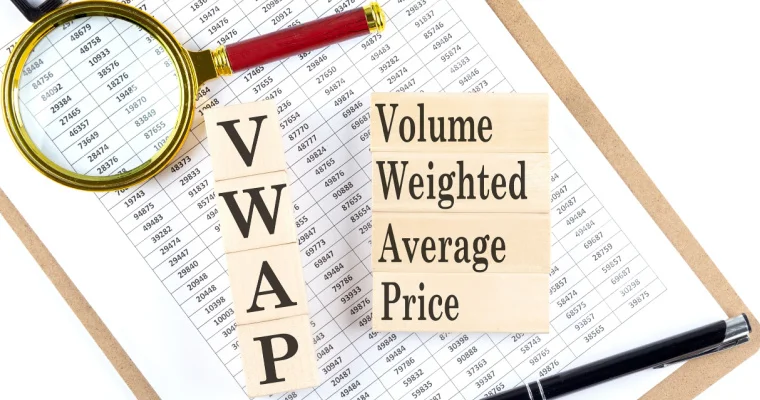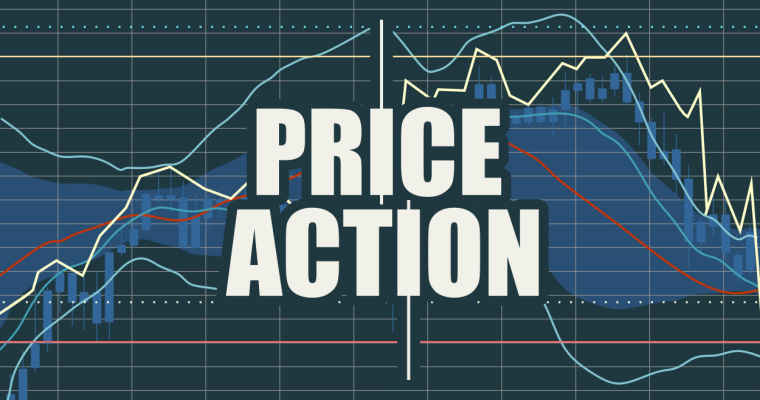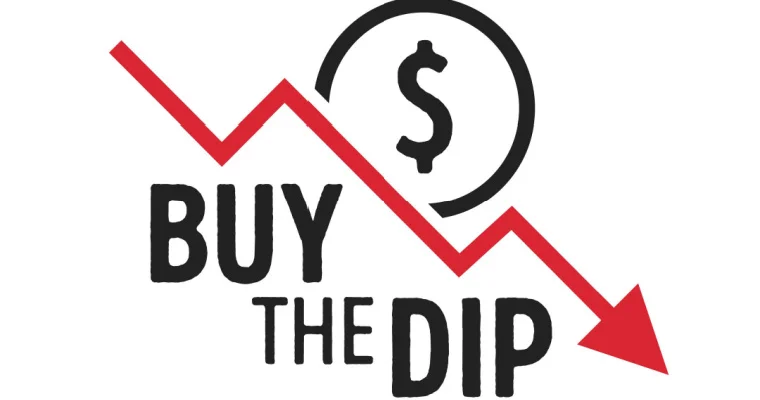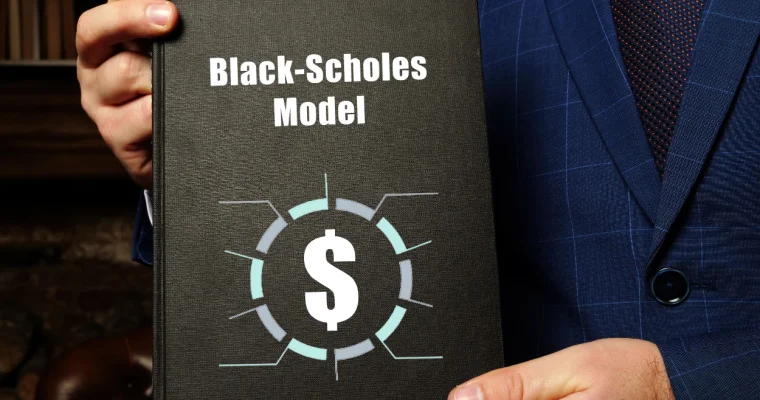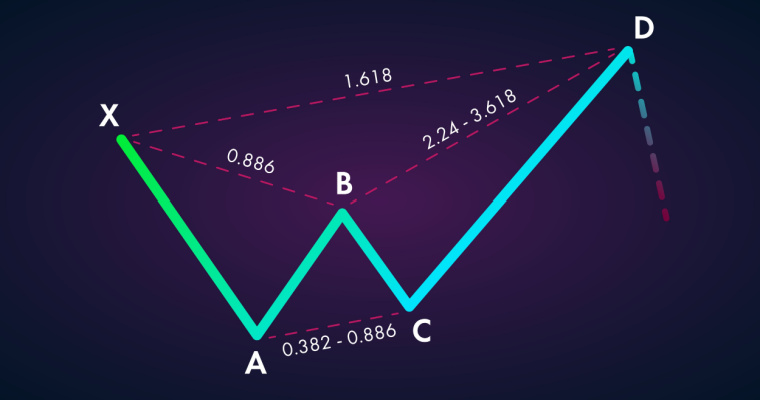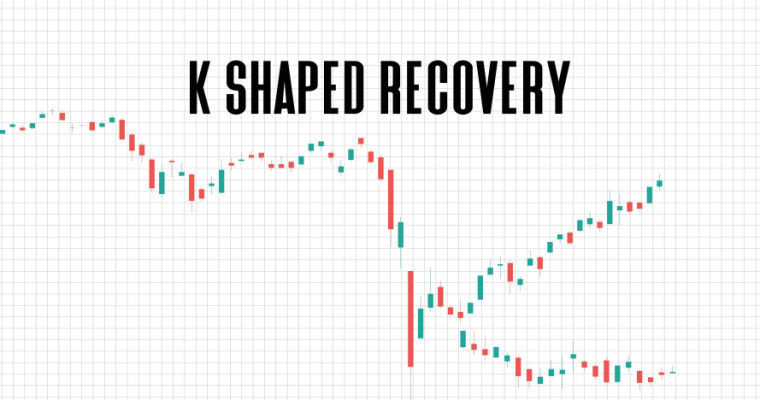What is Pennant Pattern in Trading – Its Working, Types and Features
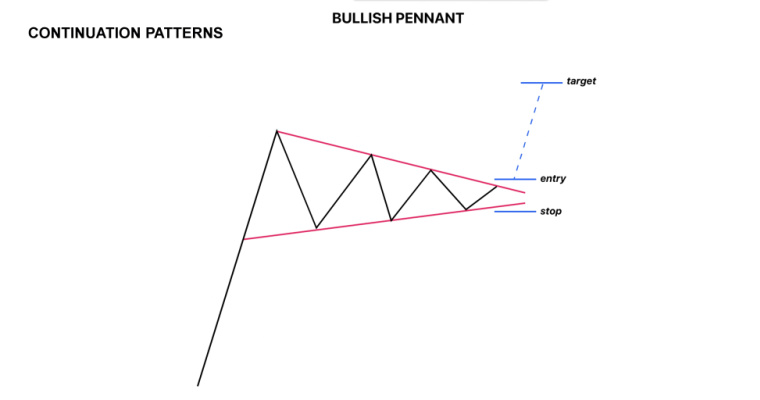
A pennant pattern is a candlestick chart that helps track an asset’s price. Its name comes from the shape of triangular pennant flags seen in various sporting events. As per this pattern, the respective asset will exhibit a substantial movement in its price after the consolidation period is over.
Read on to understand how the pennant pattern works, its types and features, how to identify this pattern, the difference between pennant and flag patterns and more.
How is Pennant Pattern Created?
You can see pennant patterns being created in various stock charts after a stock has undergone a period of consolidation. This pattern moves up or down depending on the price behaviour of the asset. This pattern starts with the pole, which represents a continuing previous trend. After this comes the sideways movement in which the price of an asset is in the consolidation phase or between resistance and support trendlines.
After this, the price range decreases and forms a flag shape wherein the resistance and support trendlines start converging. Swing traders use this pattern for analysing the stocks which have taken a break from their current progression. Any break occurring in this pattern may be construed as a signal for entry.
Now that you know the meaning of the pennant chart pattern, let’s shift our focus to its other aspects.
What Are the Types of Pennant Patterns?
Here are two types of pennant patterns that you will come across:
1. Bullish Pennant Pattern
This pattern exhibits a continuation of upward price movement. The price of the asset keeps on increasing, thus forming a bullish flagpole. It occurs when markets are making an extensive move on the higher side; subsequently, price movement halts and consolidates when support and resistance trend lines converge.
The price starts decreasing after the brief halt. However, this price drop does not last long, and the price rebounds to start rising again. Moreover, this rebound is weak, causing asset prices to fall again and form a sideways trend.
This consecutive rebound and consequent drop in prices continuously shrink in size, paving the way for the convergence of the two trendlines. Eventually, a breakout occurs, and asset prices start on an upward trajectory.
2. Bearish Pennant Pattern
As the name suggests, it indicates bearish tendencies creeping into the market. This pattern forms when there is a steep and vertical downtrend occurring in asset prices. Due to a sharp fall in price, some traders close their position and exit the trade. However, there are some traders who join this trend leading to consolidation.
As traders start joining this trend, asset price moves past the bottom of the pennant pattern and continues its journey downwards. For effective trading in these situations, traders undertake a short position at the bottom of pennant charts and initiate a stop loss above this pattern.
How to Differentiate Bullish and Bearish Pennant Patterns?
In case of a bullish pennant pattern, the price of the asset rises before the consolidation phase or sideways trend. The upward movement in prices halts for some time and makes higher lows and lower highs.
This also leads to convergence between support and resistance lines present at the bottom and top of the pennant, respectively. In these sideways movements, markets experience a strong positive sentiment that will eventually lead to an uptrend.
On the other hand, bearish pennant functions in a completely opposite manner as compared to bullish patterns. The price is on a downward trajectory prior to a sideways trend. However, this trend halts for some time, and the asset experiences lower highs and higher lows, paving the way for the convergence of resistance and support lines.
However, at the end of a sideways trend, bearish sentiments take over the asset, and price starts falling rapidly.
What Are the Features of Pennant Patterns?
Here are some features of pennant patterns:
- These patterns exhibit a continuation of the downward or upward trend.
- Every pennant pattern will have two breakout points. One will occur at the end of the flagpole and the other after the consolidation phase is over.
- Pennants will show a triangular shape at the end of the consolidation period.
- Bearish and bullish pennant patterns are two types of pennants. The former represents a downtrend, whereas the latter is representative of an uptrend in the market.
How to Identify Pennant Pattern?
Pennants are continuous patterns in which a large movement in the stock’s prices is observed after which there is a consolidation period.
To identify a pennant pattern, you need to observe these three movements:
- A Flagpole: This is an upward rise that is always present at the start of a pennant pattern.
- Breakout Levels: There should be two separate breakouts – one at the end of the flagpole itself, and the other one after the consolidation period preceding the flagpole.
- The Pennant Itself: The pennant should look like a triangular shape after the period of consolidation is over. Two converging trend lines should form the pennant triangle.
After observing these movements, here’s how you can identify a pennant pattern:
- Spot the price of an asset drop sharply
- See the movements that follow
- Connect the upper and lower swings
If it forms a triangle, then you have a pennant.
How to Trade Pennants?
First, let’s see how to effectively trade bullish pennant patterns.
In the case of bullish pennants, traders put a buy order on the resistance trendline. When a breakout from the resistance line occurs, individuals try to confirm whether a pennant pattern is being formed by looking at the average trading volumes.
To effectively manage their risks, traders would initiate a stop loss below the support trendlines. Therefore, the ideal entry price when the bullish pattern is operating would be the break-out price. The exit price in this trade would be the sum of the length of an initial flagpole and the entry price.
Now, let’s take a look at how you can trade while bearish pennant patterns are operating in markets. You can put a short order at the support trendline of this pennant. Moreover, in case of a breakout, you should look out for confirmatory signals of bearish pennants by analysing average trading volumes.
Thereafter for risk management purposes, you can put a stop-loss order above the resistance trendline. The cover price of this trade would amount to subtracting the length of the initial flagpole from the entry price. Moreover, the short price will be equivalent to the break-out price.
What is an Example of Pennant Pattern?
Here’s an example of this pattern that will help you understand this concept more easily.
Let’s say Company ABC was hit by a financial crisis due to the mishandling of debts. Their share price plummeted to Rs. 15. However, with new management in place, its finances started to improve, and with this, stock prices started rising gradually. Its prices hovered around Rs. 50 for some time and witnessed steady but lower highs.
This led to the formation of a pennant pattern. Its pole and support and resistance trend lines were easily identifiable by looking at the pattern formed.
What Are the Differences between Pennant and Flag Patterns?
Both these patterns are quite similar in their working and structure. However, one key difference between a flag and a pennant pattern is that in case of pennant patterns, the consolidation phase comes with converging resistance and support trendlines.
On the other hand, in the case of flag patterns, the consolidation phase is characterised by parallel trendlines.
Final Word
A pennant pattern is a category of candlestick chart that enables traders to track the movement of asset prices. Traders use this as a signal to recalibrate their trading positions as per changing dynamics of the market. Although a pennant pattern indicates the impending continuation of a strong upward price move, traders should use other confirmatory signals before making any trading decision.
FAQs
Ans: As a general thumb rule, you should try to put a stop loss above the pennant. It facilitates trading and gives you the option to exit quickly when the market reverses. However, in case of small pennants, stop loss could be close to entry-level, resulting in multiple stop-outs.
In order to avoid these, you can add a buffer with the stop losses.
Ans: Some tips that you should keep in mind while dealing with pennant patterns are:
• Keep a watch on trading volumes.
• Always maintain profit and stop loss targets to efficiently manage your trade.
• Execute and stick to the plan.
Ans: One of the major differences between pennant and triangle patterns is that pennants will always have a flagpole. On the other hand, triangle patterns will not have any flagpoles.
Ans: One of the major differences between pennant and wedge patterns is that pennants are either sideways or horizontal. At the same time, wedge patterns are always ascending or descending.
Disclaimer
This article is solely for educational purposes. Navi doesn't take any responsibility for the information or claims made in the blog.

Customer’s Feedback
No comments found.Illiquid Stocks Guide: Definition, Examples, and its Working
Illiquid stocks are part of a long-term investment strategy that is appropriate for investors who a... Read More »What is Shooting Star Candlestick Pattern in Trading?
The shooting star candlestick pattern is considered to be a bearish reversal candlestick ... Read More »What is VWAP Indicator and How to Use it for Trading
The VWAP indicator shows the volume-weighted average market price of a particular stock. You can us... Read More »What is Price Action Trading: Its Strategy, Stop Loss and Profit Targets
Price action trading is a methodology in which the trader solely relies on analysing a security’s... Read More »What is Buy the Dip Strategy in Trading – Working and Example
‘Buy the dip’ is one of the most common phrases in the stock market. It is sort of a go-t... Read More »What is the Black Scholes Model – Formula, Calculation and Assumptions
Among the important concepts in modern financial theory, the Black Scholes model, developed in 1973... Read More »What is Iron Condor and What are its Strategies?
Iron Condor is an options trading strategy that involves four options with the same expiration date... Read More »What is Harmonic Pattern and How Does it Help in Trading?
Harmonic patterns are one of the most efficient and effective trading patterns. Although they are m... Read More »What is a Contract Note and Why is it Important?
Contract note is a legal document containing the details of every stockbroker's trade on a stock ex... Read More »What is K-shaped Recovery: Indication, Example and
Economies go through multiple phases in business cycles. One such phase is a recession which is mar... Read More »Guide to Book Building – Its Types, Benefits and Process
Initial public offerings (IPOs) are priced as specified by their underwriters. The process by which... Read More »Support and Resistance in Trading: Working, Strategies, Uses and Example
Support and resistance are two of the most significant and practical concepts in technical analysis... Read More »Top 10 Chit Fund Schemes in India in 2023
Chit funds are one of the most popular return-generating saving schemes in India. It is a financial... Read More »10 Best Gold ETFs in India to Invest in April 2023
Gold ETFs or Gold Exchange Traded Funds are passively managed funds that track the price of physica... Read More »10 Best Demat Accounts in India for Beginners in 2023
Creation of Demat accounts revolutionised the way trades were conducted at the stock exchanges. It... Read More »20 Best Index Funds to Invest in India in April 2023
What is an Index Fund? An index fund is a type of mutual fund or exchange-traded fund (ETF) that... Read More »Best Arbitrage Mutual Funds to Invest in India in April 2023
Arbitrage funds are hybrid mutual fund schemes that aim to make low-risk profits by buying and sell... Read More »10 Best SIP Plans in India to Invest in April 2023
What is SIP? SIP or Systematic Investment Plan is a method of investing a fixed amount in ... Read More »10 Best Corporate Bond Funds in India to Invest in April 2023
Corporate bond funds are debt funds that invest at least 80% of the investment corpus in companies ... Read More »10 Best Bank for Savings Account in India [Highest Interest Rate 2023]
Savings account is a type of financial instrument offered by several banks. It lets you safely depo... Read More »












